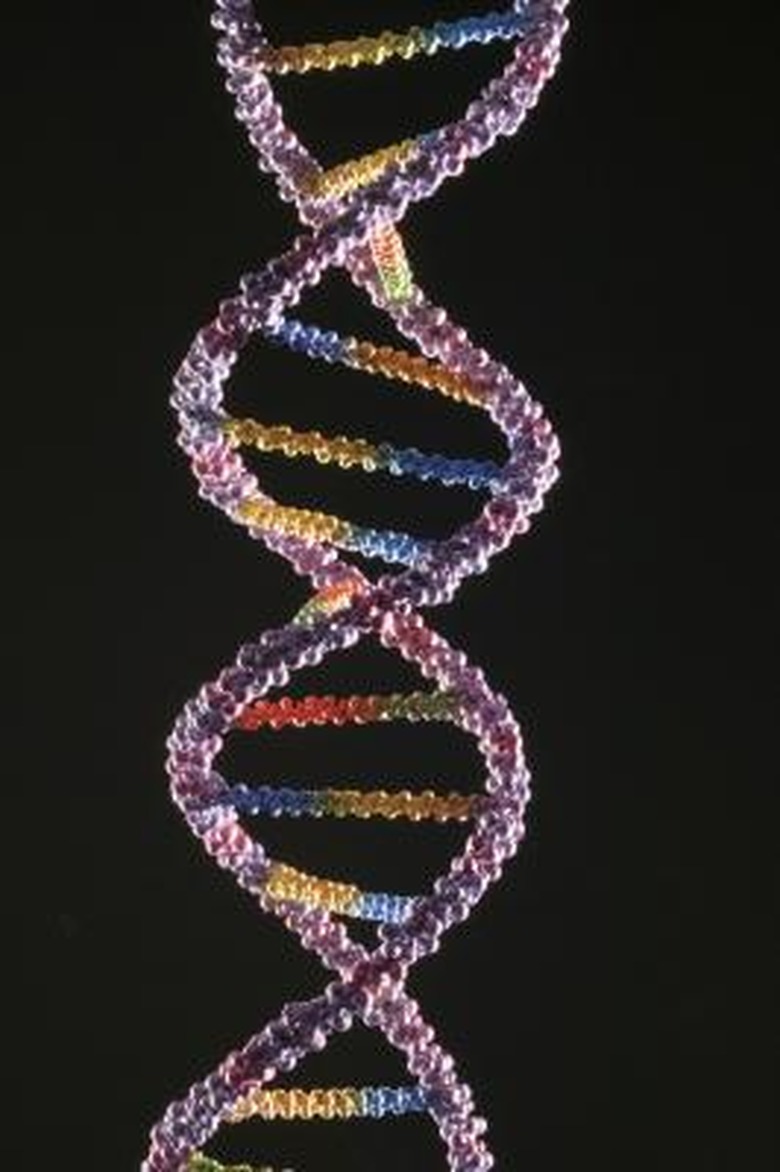How Do Alleles Affect Inherited Traits?
Definition of Allele
An allele is a possible coding sequence of a gene. A common misconception or flawed terminology is that there are genes for specific traits. Genes do control different traits of an organism, such as hair color or eye color, but the actual expression of a trait depends on which allele is dominant. For example, the gene for eye color in humans can have an allele for brown eyes and an allele for blue eyes, or an allele for brown eyes and one for green eyes. Humans, as well as other life forms that have two copies of each chromosome, also have two copies of each gene to store alleles.
Homozygosity vs. Heterozygosity
Homozygosity vs. Heterozygosity
The two copies of a gene, one on each of the chromosomes, each contain an allele. Homozygosity occurs when the two gene copies contain the same allele for a particular phenotype, or expressed trait. Heterozygosity occurs when the two alleles are different. Phenotypes can either be dominant or recessive. If a phenotype is dominant, only one of the alleles for it needs to be present. If it's recessive, both alleles have to be present.
Measuring Probability of Genotypes
Measuring Probability of Genotypes
According to the Utah State Office of Education, a Punnett square can be used to predict the probability that a particular genotype will occur in offspring by taking the alleles of the two parents and combining them. The genotype will influence the phenotype, depending on whether the alleles are dominant or recessive. The basic Punnett square is divided into four smaller squares. The possible genes of one parent are listed above the top two squares, the other one beside it going vertically down the left side. Capital letters denote dominant alleles, and lower-case letters denote recessive alleles. For example, a homozygous dominant gene for brown eyes would be written as BB, and a heterozygous one as Bb. A homozygous recessive gene would be written as bb. By taking the letters adjacent to each square, for a Bb x Bb cross, the probability of a BB genotype would be 25 percent, Bb 50 percent and bb 25 percent. In terms of phenotype, the offspring has a 75 percent chance of having brown eyes because brown eyes are a dominant phenotype, according to sciencekidsathome.com.
References
Cite This Article
MLA
Smathers, Michael O.. "How Do Alleles Affect Inherited Traits?" sciencing.com, https://www.sciencing.com/do-alleles-affect-inherited-traits-5178806/. 24 April 2017.
APA
Smathers, Michael O.. (2017, April 24). How Do Alleles Affect Inherited Traits?. sciencing.com. Retrieved from https://www.sciencing.com/do-alleles-affect-inherited-traits-5178806/
Chicago
Smathers, Michael O.. How Do Alleles Affect Inherited Traits? last modified March 24, 2022. https://www.sciencing.com/do-alleles-affect-inherited-traits-5178806/
